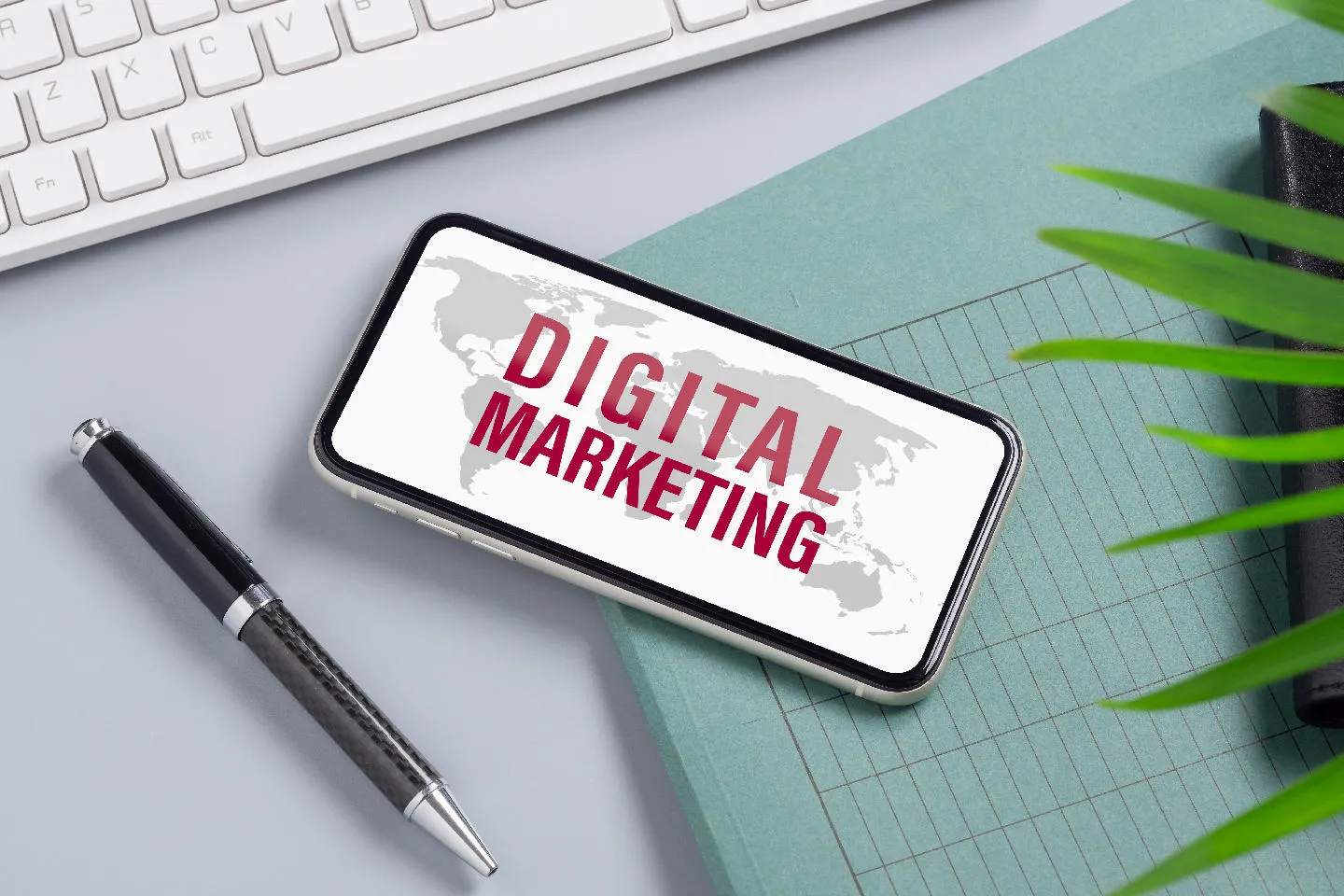
Who Else Wants to Boost Conversion Rates with Google Display Ads?
In today’s competitive digital marketing environment, Google Display Ads has become an essential tool for brands to reach a wide audience. According to Google, Google Display Ads can reach over 90% of online users, making it a key channel for increasing brand exposure and conversion rates. However, with the fragmentation of consumer behavior and the intensification of advertising fatigue, how to design effective creative materials and optimize advertising effectiveness has become a core challenge facing marketers.
As Avinash Kaushik mentions in “Measurement Resolutions: Mastering Incrementality,” companies need to focus more on the incremental effects of advertising rather than relying solely on traditional attribution models. This means that marketers need to ensure that every penny of advertising budget results in actual conversions through innovative creative design and data-driven optimization strategies.
This article will explore in depth how to improve the conversion rate and return on investment of Google Display Network(GDN) through creative material design and optimization techniques, and combine actual case analysis to provide marketers with actionable suggestions.

I. Core principles of creative material design
When designing creative assets for Google Display Network(GDN), the following four core principles are key to improving ad performance:
- Visual appeal
High-quality pictures, videos, and dynamic images are the first step to attract users' attention. According to research, ads with visual elements have a 47% higher click-through rate than text-only ads. For example, during its digital transformation, Carrefour successfully increased its brand exposure by combining video view campaigns (VVC) with multimedia advertising. The creative production service provided by Topkee uses advanced AI technology to generate creative text, image, and video requirements, and professional designers perform detailed design work to ensure that the materials meet market requirements and highlight brand characteristics. This kind of professional visual processing can effectively capture the user's attention and increase the interaction rate of advertisements. - The message is concise and powerful
In a fragmented marketing environment, users’ attention span is extremely short. Therefore, advertising messages must be concise and hit the pain points directly. For example, when promoting its health product "Red Crystal Countermeasure," Mars Biotech successfully conveyed the core value of the product and aroused consumers' interest through short copy such as "Early maintenance, stay away from risks." Topkee's advertising theme proposal service generates professional and innovative theme proposals from four core dimensions: service, competitiveness, values, and customization, helping companies quickly obtain high-quality creative directions and save planning and preparation time. - Personalized design
Designing customized advertising materials based on the interests and behaviors of the audience can greatly improve the relevance of the advertisement. Google Display Ads' dynamic ads feature can automatically adjust advertising content based on users' browsing history and preferences. For example, in its spring promotion, Carrefour designed differentiated advertising materials for household goods and outdoor activities groups, which increased consumer interaction and conversion rates. Topkee uses TAG to track and analyze user behavior and interaction data, divides users into different groups, and designs corresponding personalized marketing content to achieve the maximum advertising effect at the lowest cost while providing a personalized customer experience. - Call to Action (CTA)
A clear call to action is key to guiding users to take the next step. Whether it’s “Buy Now,” “Sign Up for a Deal,” or “Learn More,” your CTA should be clear and compelling. For example, when iSPOT designed an ad for Mars Biotech, it successfully increased the conversion rate of the ad through strong CTAs such as "Buy now, limited time offer." Topkee's Weber tool can quickly create landing pages that closely match advertising campaigns, ensure consistency between ads and landing pages, provide a high-quality customer experience, and guide users to complete conversions through clear CTAs.
Based on these core principles, Topkee's creative material design services, combined with AI technology and the experience of a professional team, can provide companies with a steady stream of high-quality creative materials, helping them stand out in the highly competitive digital marketing environment.
II. Key Tips for Optimizing Google Display Ads
To maximize the effectiveness of Google Display Ads, marketers need to master the following optimization techniques:
- A/B Testing
A/B testing is key to finding the most effective ad design and messaging combination. By testing different versions of creative materials, marketers can understand which design is more attractive to users. For example, when promoting its products, Mars Biotech A/B tested different versions of its ad images and found that creatives using bold colors increased click-through rates by 30%. In addition, A/B testing is not limited to visual elements. It can also be applied to copywriting, calls to action (CTA), and landing page design to comprehensively optimize the interaction rate and conversion rate of advertisements. According to Google, campaigns that run A/B testing can increase conversion rates by 20% on average, which shows its importance in ad optimization. - Accurate Audience Targeting
Accurate audience targeting can avoid advertising waste and increase conversion rates. Google Display Ads' audience analysis tool can help marketers accurately target users based on their age, gender, interests, etc. For example, Carrefour successfully targeted advertisements to high-potential consumers through membership data classification, thereby improving the ROI of advertising. In addition, Google Display Ads' custom audience feature allows marketers to build highly relevant audiences based on user browsing history, purchasing behavior, and other data. This data-driven audience targeting strategy not only improves ad relevance but also reduces cost per conversion (CPA). - Dynamic Ads
Google Display Ads' dynamic ads feature can automatically adjust advertising content based on user behavior and preferences. This not only improves the relevance of advertising but also reduces the workload of marketers. For example, when iSPOT designed an advertisement for Mars Biotech, it automatically adjusted the advertising materials through the dynamic advertising function, thereby improving the conversion rate of the advertisement. The advantage of dynamic advertising is that it can respond to market changes and user needs in real time, ensuring that advertising content is always up to date and attractive. According to Google, businesses that use dynamic ads can increase ad engagement rates by 30% on average. - Cross-Channel Integration
Combining Google Display Ads with other marketing channels (such as search ads and YouTube ads) can create a consistent brand experience and improve the overall effectiveness of your advertising. For example, Carrefour combined Google Display Ads and YouTube ads in its spring promotion, successfully increasing the brand's overall exposure and conversion rate. The advantage of cross-channel integration is that it can cover multiple user touchpoints, strengthen brand impression, and increase conversion rates. According to research, advertising campaigns that integrate multiple marketing channels can increase brand awareness by 40% and sales by 25% on average. This strategy not only maximizes the effectiveness of your advertising budget but also creates a more comprehensive user experience.
With these key tips, marketers can more effectively optimize Google Display Ads, increase ad engagement and conversion rates, and maximize advertising ROI.

III. Data-driven creative material optimization
In digital marketing, data is the key to optimizing advertising effectiveness. Here are three data-driven optimization strategies that marketers can use to improve Google Display Ads results:
- Conversion Tracking
Google Display Ads' conversion tracking tool can help marketers analyze the actual effectiveness of advertising and adjust marketing strategies based on the data. For example, during Carrefour’s spring promotion, they found that their ad conversion rate increased by 20% through conversion tracking. This data not only proves the effectiveness of advertising but also provides a clear optimization direction for subsequent marketing strategies. By tracking the user journey from click to purchase, marketers can identify exactly which creative and messaging combinations drive conversions, allowing them to focus resources on the most effective ideas. - Incremental Analysis
Incremental analysis can assess the true impact of advertising and avoid overestimating or underestimating the effectiveness of advertising. This technology is particularly useful in multi-channel marketing environments, helping marketers distinguish the actual incremental effects of advertising from the impact of other factors. For example, when iSPOT designed advertising for Mars Biotech, it found through incremental analysis that its advertising strategy brought a 65% performance increase for the brand. This type of analysis can not only verify the actual value of advertising but also provide a scientific basis for future advertising budget allocation, ensuring that every investment can bring maximum returns. - AI-Driven Optimization
Google Display Ads' AI technology can automate the optimization process of creative materials, improving efficiency and effectiveness. Through machine learning algorithms, the system can dynamically adjust advertising content based on users' real-time behavior and preferences, ensuring that the ads always remain relevant and attractive. For example, iSPOT used Google Display Ads' AI technology to automatically adjust the advertising creatives of Mars Biotech, successfully increasing the conversion rate of the ads. This technology not only reduces the workload of marketers but also enables accurate predictions based on large amounts of data, continuously optimizes advertising performance, and maintains a leading edge in a highly competitive market.
Through these data-driven optimization strategies, marketers can more accurately evaluate advertising effectiveness and make continuous improvements based on actual data to maximize the return on investment of Google Display Ads.

Conclusion:
Creative material design and optimization of Google Display Ads plays a vital role in the field of digital marketing. With the rapid development of technology, marketers will face more opportunities and challenges in the future. The following three trends will guide the future direction of creative material design and optimization:
- AI-Driven Personalization
In the future, AI technology will further promote the personalization and automation of creative materials. According to Google's forecast, by 2025, more than 80% of digital advertising will be automatically optimized through AI technology. This deeply personalized advertising strategy not only improves user experience but also maximizes advertising return on investment. - Real-Time Data Optimization
As data analytics advances, marketers will be able to optimize advertising strategies more instantly. Through Google Display Ads conversion tracking and incremental analysis tools, marketers can accurately evaluate the true effectiveness of advertising and make dynamic adjustments based on the data. This data-driven, real-time optimization will be the key to improving advertising effectiveness in the future. - Omni-Channel Integration
Future marketing strategies will focus more on cross-channel integration to create a consistent brand experience. Combining Google Display Ads with other marketing channels (such as search ads and YouTube ads) can cover multiple user touchpoints, strengthen brand impressions, and increase conversion rates. This omni-channel marketing model will become an important strategy for brands to stand out in the highly competitive market.
Under the guidance of these trends, marketers need to constantly learn and adapt to new technologies, and continuously optimize creative materials through data-driven strategies and AI technology to maximize advertising effectiveness. If you’re looking for professional advice on how to improve your Google Display Ads results, get in touch with our team, and we’ll provide you with a tailor-made solution to help you achieve outstanding results in digital marketing.
Appendix:
You might also like

Unlock the Power of Personalized Google Display Ads
Enhance consumer engagement with tailored Google Display Ads.

Boost E - commerce and In - store Sales with Google Display Ads
Explore how Google Display Ads can effectively drive online and offline sales

Now you can have super precise Google Display Ads
Optimize Google Display Ads with real-time insights and creative testing